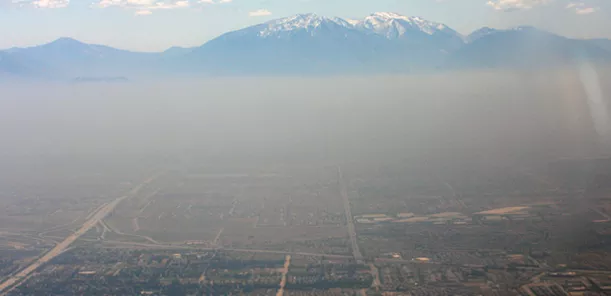The Evolving Capabilities of Monitoring Atmospheric Composition for Human Health and Air Quality Applications
Get updates about new data available, satellite instrument development progress, and provide feedback on your changing needs and challenges.
Pre-registration requested
Location: College Park, MD and Virtual
Hear about evolving satellite capabilities to monitor the composition of the atmosphere, including air pollution that affects human health. New sensors have recently been launched while others are being built to serve users in the future. This event will focus on advancing engagement and readiness for the newest and next generation of these satellites. Attendees can anticipate:

- Receiving updates about innovative satellite systems and exciting new applications.
- Networking and engaging with critical stakeholders and getting feedback from them on their changing needs.
- Offering/receiving feedback on the road to application-ready science for societal benefit and decision-making.
Context: In 2020 thematic workshops were held to determine user needs and develop requirements for new instruments planned for deployment on the next generation of geostationary satellites, GeoXO. Since then, NASA has recently launched TEMPO, a satellite capable of measuring pollution over North America, from Mexico City to the Canadian oil sands, and from the Atlantic to the Pacific hourly and at high spatial resolution.
We look forward to your participation and feedback as we continue to guide the production of new data products and future instrument requirements.
Agenda
12:30: Welcome (Greg Frost, NOAA OAR)
12:40: NOAA User Readiness Plan for Atmospheric Composition from Space (Greg Frost, NOAA OAR)
12:50: GXI GeoXO Imager (Jordan Gerth, NWS Office of Observations)
13:05: GXS GeoXO Sounder (Jim Yoe, NWS/NCEP and JSCDA)
13:20: Preparing for GeoXO using TEMPO (Shobha Kondragunta, NOAA/NESDIS)
13:35: What does the future hold? Status update on GeoXO program (Pam Sullivan, NOAA NESDIS)
13:50: Update on GeoXO ACX instrument - specifications and progress (Joanna Joiner, NASA GSFC)
14:05: Air pollution impacts from warehousing in the United States uncovered with satellite data (Gaige Kerr, Milken Institute School of Public Health)
14:20: Speed Talks; 5 min each
How would an operational geostationary satellite change your perspective?Satellite perspective of EPA's new PM2.5 standard - (Barron Henderson (EPA) and Shobha Kondragunta (NOAA)
City of Baltimore EJ studies (Benjamin Nault, Assistant Research Scientist, DeCarlo Group Department of Environmental Health and Engineering, Whiting School of Engineering, Johns Hopkins University)
AiRMAPS in support of TEMPO and GeoXO, (Steve Brown, Program Leader, Tropospheric Chemistry, Atmospheric Remote Sensing, NOAA Chemical Sciences Laboratory)
NOAA’s ARC in support of TEMPO and GeoXO, Xinrong Ren, Physical Scientist, Greenhouse Gas Monitoring Program, NOAA Air Resources Laboratory)
14:40: Questions/Discussions
14:55: Break
15:00: Stakeholder Interaction Session (Moderators: Andy Latto, NOAA NESDIS; Greg Frost, OAR)
15:45 - 16:30: Invite application studies using TEMPO data
GOES-R GLM lightning data along with TEMPO NO2 data - (Michael Geigert, Connecticut Department of Energy and Environmental Protection)
Key Bridge collapse data analysis - (Shobha K., Joel Dreessen, Senior Meteorologist at Maryland Department of the Environment)
TEMPO NOx emissions - (Brian McDonald, Environmental Engineer, Atmospheric Composition Modeling, NOAA Chemical Sciences Laboratory)
Making the case for GeoXO GHG instrument - (Brian McDonald)
